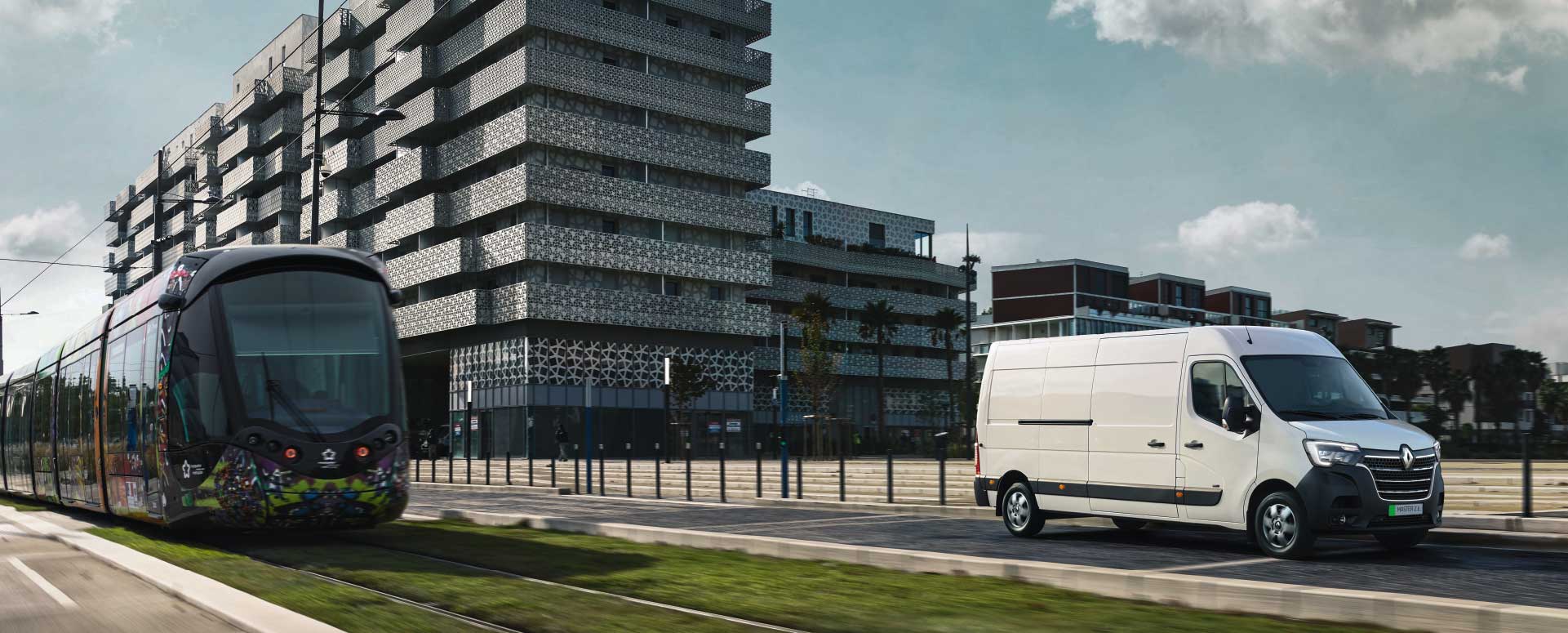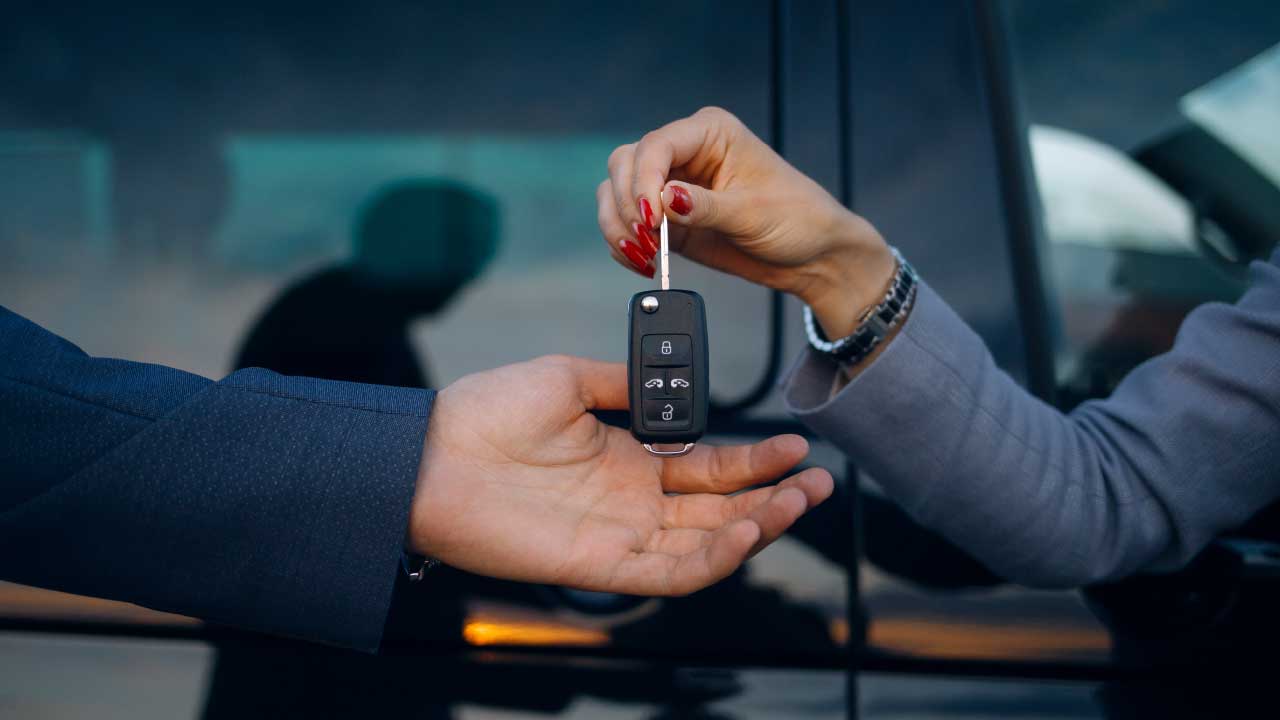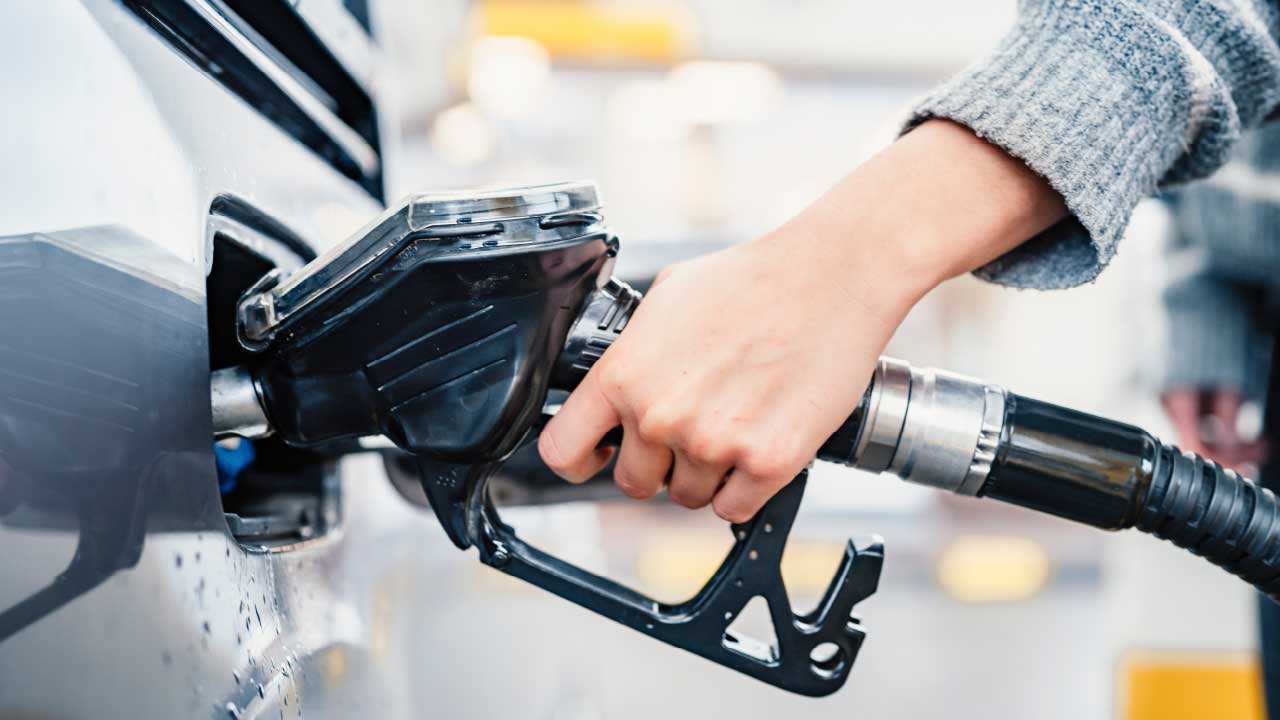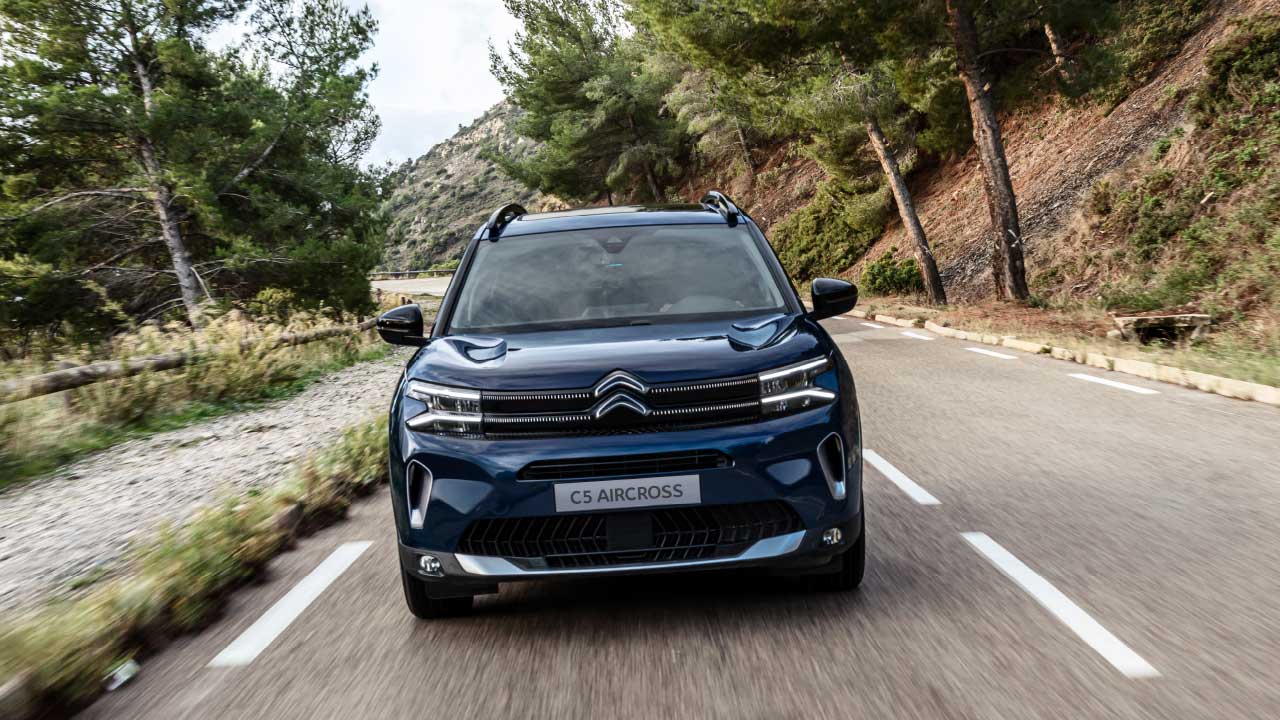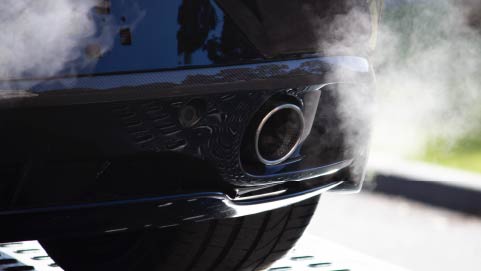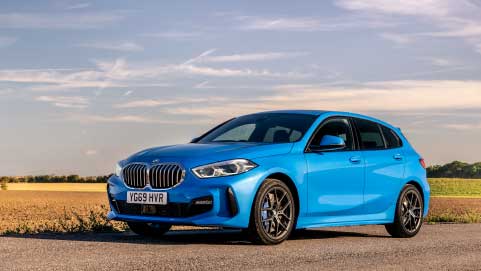To assist in reducing the running costs of your fleet, we have collated a variety of tips and advice to assist.
1. Reconsider funding methods
Consideration of alternative funding methods is a fundamental starting point when reviewing a fleet strategy. Changes within your business operations and external factors can mean the decisions you arrived at three or four years ago may not stand up to scrutiny today.
There are several ways to fund a fleet and Contract Hire remains the most popular within the UK thanks to a number of financial and operational benefits. A reputable Contract Hire provider will be able to negotiate manufacturer terms on your behalf and should have access to a panel of funders which can result in superb value.
Even if your current fleet is owned outright, it may be possible to sell some of your vehicles to a Contract Hire company and lease them back through Sale and Leaseback.
2. Select your fleet based on emissions and economy
The cost and environmental arguments for adopting a basic capping level on emissions and economy are very strong. By rewriting your choice list to include only vehicles with CO2 figures of no more than 140g/km and with fuel consumption of no less than an average of 45mpg you will realise savings in fuel, National Insurance and Benefit in Kind taxation.
You may feel that this change would add too many restrictions. However, with around two-thirds of vehicles being able to fit into the lower emission target, you may be pleasantly surprised at the range of vehicles available.
3. Remove vehicle choice
If you are bold enough to remove choice altogether by adopting just one vehicle and one management model, you could potentially access significant savings. This may be unpopular with drivers at first, but their concerns could potentially be met by being able to drive a much ‘better’ car thanks to the economies of scale and increased buying power.
Of course, there are certain industries and roles where recruitment and retention are key issues, and in these cases such a radical move should not be taken lightly. For most fleets, this would be a dramatic policy move, but the cost arguments make it worthy of serious thought. (A bonus for fleet managers is that it makes vehicle reallocation very simple).
4. Choose vehicles based on whole-life costs
It is important to review total cost of ownership as the platform from which the optimum vehicles for the fleet are selected. Many fleet managers still select vehicles based on their purchase price or P11D banding. This does not provide an accurate picture of a vehicle's true cost across its lifetime.
Your Contract Hire provider should have access to financial modelling software to take into account the variables such as fuel, fleet, taxation, maintenance and insurance.
5. Examine cash allowances versus company cars
Cash for car schemes usually cover more than just the provision of a vehicle to the employee and bringing yours into alignment with your company car scheme could provide substantial savings. To get an idea of what savings can be made, you should compare costs for each company car grade (including mileage reimbursements) with the cash option that you provide.
Where appropriate you should take steps to bring packages into alignment. However, you will need to take into account any commitments made by cash takers regarding existing personal leases or loans.
6. Encourage fuel efficient driving
Encouraging your employees to drive more efficiently could help to cut your fuel bills significantly. Drivers doing 12,000 miles a year can make average savings of around £250 each year just by improving their driving habits.
The suggested driver tips to help achieve these savings include:
Optimal use of gears
When accelerating, engine revs should be kept low. Drivers should change gear early (often below 2,000rpm). Where appropriate, change gears in a ‘block’ when accelerating, for example third to fifth, and adopt the same principle when changing down through the gears to slow down.
Drive at suitable speeds
The faster you go the greater the fuel consumption and pollution.
Maintain the correct tyre pressure
Tyres running at the wrong pressure are not just a safety concern, but also wear much faster. Additionally they increase fuel consumption to a degree that many fleet managers find surprising.
Tyre pressures should be checked regularly, especially before longer journeys. Consider issuing drivers with handheld tyre pressure monitors and make it part of their responsibility to frequently check their tyres.
Cut down on air conditioning use
Air conditioning increases fuel consumption at low speeds, but at higher speeds the effects are less noticeable. If it's a hot day open the windows around town and save the air conditioning for high speed driving. Do not leave air conditioning on all the time. Instead, only run it when needed.
Remove roof racks and roof bars when not needed
A large roof rack or roof box can increase fuel consumption by as much as 30 percent at motorway speeds.
Utilise Stop-Start technology
When stationary at traffic lights or in a traffic jam, utilising stop start technology can see you save significant amounts of fuel over a year.
Reduce overall weight
Removing unrequired tools and equipment from your vehicle can reduce its overall weight and subsequently save on fuel.
Anticipate road conditions
Through better anticipation, drivers can reduce unnecessary acceleration and braking. This can mean looking three or four vehicles ahead and picking up subtle clues from drivers as to what manoeuvres they will carry out next.
Maintain the focus on fuel savings
Keeping a focus on savings in the months and years ahead will depend upon good fleet management and communication. The Energy Savings Trust encourages Fleet Managers to monitor individual drivers’ fuel consumption and compare it to the vehicle’s official fuel economy.
Exception reports can also be generated to compare driver economy and provide additional training to drivers if required.
7. Choose your fuel card provider wisely
When selecting a fuel card provider choose one that makes tracking expenditure easy through online reporting tools. The efficiency of the fuels themselves can also vary considerably. Shell’s FuelSave products can deliver extra efficiencies of around 2 percent - which when calculated across a large fleet can easily amount to six figure annual savings.
8. Remove Free Fuel
Free fuel is now becoming a much less attractive perk due to changes in Benefit in Kind taxation. Since the late 1990s, the government has gradually increased the scale charge on ‘free’ fuel. Consequently, for many company car drivers, the tax on their private fuel is actually greater than the tax they pay on their company car.
9. Encourage refuelling at the right places
Prices at the forecourts can vary considerably depending upon factors such as local competition and location. Journey planning and refuelling early will eliminate the need for an urgent refuel at the more expensive places such as motorway service stations.
10. Communicate cost saving ideas effectively
Identifying ways for drivers to assist in helping your company reduce its costs is an effective first step, but how can your busubess implement these changes? Large companies with an Internal Communications team, HR or Fleet departments can help spread the message and your fleet provider should also be able to help through web based resources, email bulletins or mobile phone applications.
11. Van fleet tips
Many of the recommendations in this guide work for cars and vans alike, but here’s some additional tips specifically for van fleets.
Journey and route planning
This is one of the most neglected areas of fleet management. For a sizeable van fleet, you may wish to consider investing in software that optimises a route for each of your vans based on the operational needs of each day. The benefits of minimising the miles travelled and avoiding known areas of congestion help to deliver savings in the areas of fuel, tyres, accident rates, and even penalties resulting from missed service delivery deadlines.
Additional suggestions for van fleets:
- Downsize to smaller vans where appropriate
- Choose white vehicles and add removable livery instead of selecting lower value colours
- Investigate the potential benefits of bunkered fuel
- Review ancillary equipment and shop around for cheaper alternatives
- Consider fitting speed limiters which will help to save fuel, wear and tear, and accidents
12. Accident Management
Downtime of any business vehicles impacts profitability, causes disruption, creates additional admin time, and potentially affects business-client relationships. According to a recent study by an accident management company, business drivers have collision rates that are 30 to 40 percent higher than those of private drivers.
Making drivers aware of the higher risk situations can help to reduce incidents. Surprisingly, most accidents occur at times we consider low risk such as when the weather is clear. Different road types also make a difference. Accidents on A roads are thought to represent 20 percent of the share of all accidents, car parks are at 10 percent, B roads at 11 percent, and motorways at just 2.27 percent.
Fleet Managers should consider using an Accident Management company. The specialist nature of these firms means they have well developed sector networks, covering everything from vehicle recovery, repair work, legal assistance, personal injury claims and vehicle replacement. The Fleet Manager can therefore concentrate on core business functions and rest assured knowing that incidents are being professionally handled.
13. Consider petrol vehicles for low mileage drivers
Don’t automatically assume diesel will work out cheaper. Although petrol cars often work out more expensive for fleets in the long run, it could take several years of fuel efficient motoring to make buying a diesel vehicle worthwhile. If you’re planning to keep the vehicle for just a few years or if it will be used by a low-mileage driver (less than 10,000 miles a year) you could actually save hundreds of pounds per vehicle by opting for a petrol model.
What about the differences in servicing costs?
Over a typical three or four-year ownership period, you are unlikely to see a significant difference between servicing costs for equivalent petrol and diesel cars.
What about Residual values?
For Fleet Managers who prefer to purchase outright, consider carefully what each vehicle will be worth when you come to sell it.
14. Optimise daily rental usage
Watch out for employees looking to hire vehicles with powerful engines and an unnecessarily high specification. A policy driven decision is more likely to result in savings more than a driver based one.
Consolidating suppliers will help achieve better rates and will also make it far easier to monitor costs and usage. Online booking and management platforms now make this a straightforward process.
The purchase of a daily vehicle rental should only be used whenever there is no suitable alternative.
We recommend using the following check list to help keep your costs to a minimum.
- Are there any company vehicles available for use at your location? Ensure all company vehicles can be made available when not in use.
- Can the number of days rented be shortened in any way? For example, do you really need delivery of the car the day prior to your journey?
- Can a smaller vehicle type be used? Consider how many people will be travelling and what mileage will be covered on the journey.
- Do you need the vehicle delivered to your home? The fee for home delivery can be twice the cost of a delivery to site
- Having rented the vehicle, it is a requirement that the driver refuels the vehicle prior to it being collected – most rental companies charge a service fee for refuelling vehicles which can increase the cost by a third.
15. Reduce grey fleet journeys
Much has been covered in the fleet press regarding the corporate manslaughter risks associated with grey fleet drivers but how do these journeys affect costs? Grey fleet mileage re-imbursement rates are normally considerably higher than alternative modes of travel, so putting grey fleet journeys firmly in the spotlight will encourage employees to make more considered decisions about the work related trips they make.
16. Ensure your fleet partner is a ‘good fit’
How should you select a new fleet partner to deliver cost savings without making sacrifices in customer service? You may be tempted to look at one of the biggest fleet companies, but you should also take into account how your business looks to them within the context of their own ‘fleet size’.
They may do a great job at looking after clients with fleet sizes of 1000 vehicles or more, but how do they treat customers with a smaller fleet of 20 to 40 vehicles? In this instance, a smaller fleet company may be a better fit.
Other important areas to look at:
- How long have they operated within the sector?
- What service level agreements and key performance indicators do they work towards?
- What makes them tick? Is their culture rooted in finance, motors, IT?
- Have they recently merged with another company and are still going through the integration process?
- Are they tied to a single funder and do they cover all manufacturers?
- How many long standing clients do they have?
- What do their customers and lost customers say about them?
- Who is the parent group? What are their IT capabilities?
- Are prices proposed in the early tender stages sustainable over the longer term?
- What would their implementation plan look like?
17. Minimise end of contract charges
What is considered as ’Fair Wear and Tear’ does vary between leasing companies, so you should check the terms and conditions of your lease provider. As a general rule, small areas of chipping, including door edges, are usually acceptable, as are slight scratches and abrasions provided primer or bare metal is not showing.
The British Vehicle Rental & Leasing Association (BVRLA) has set out an industry Fair Wear and Tear standard to help drivers of leased and financed cars to reduce or eliminate hire charges. There are a number of specific things the driver should do to minimise end of hire charges:-
- The vehicle should be in good working order in all respects
- All tyres, including the spare, must meet the minimum UK legal requirements
- There should be no rust or corrosion on any painted area
- Visible dents and deep scratches on body panels should be repaired
- There should be no tears, burns or other damage to the upholstery
- All original equipment must be present and operate correctly
- The exterior of the vehicle should be cleaned to facilitate inspection
- The interior of the vehicle should be valeted and cleared of rubbish
- The Service Book should be date-stamped by an authorised service centre
- The two sets of keys that were originally supplied should be available
- All documentation including service book and manual should be in the vehicle
Vehicle collection at the end of the contract
A company with a streamlined and transparent vehicle returns process will carry out an inspection several days before the actual collection with the driver present to reach a joint agreement.
This also provides the opportunity to minimise any costs (e.g. finding spare keys, service history and handbooks). Technology now allows an accurate record of vehicle condition to be made available to the customer on request.
18. Reduce driving speed
When you dispatch your delivery vehicles, your service engineers, or sales reps to a customer, you probably ask them to arrive as quickly as possible. Your drivers almost certainly drive to their appointed destinations as fast as possible, perhaps exceeding the speed limits as they go.
Excessive speeding is risky, illegal, and uses much more fuel. According to the AA, driving at 70mph uses up to 9 percent more fuel than at 60mph and up to 15 percent more than at 50mph. Cruising at 80mph can use up to 25 percent more fuel than at 70mph.
Even if you have a small fleet, making a fuel cost saving of just a few percent per journey makes a huge impact and goes some way to offsetting fuel price increases. If you have a large fleet then the potential benefit will be even more dramatic.
In some instances, it may be worth installing vehicle tracking systems which can send alerts to the fleet manager or driver to tell them when they're exceeding speed limits and encourage them to slow down.
19. Demand expert advice from your Account Manager
The management of a fleet normally falls into two areas;
1. Day-to-day interaction with your drivers, which should be supported by a helpdesk manned by a team that fully understands your car policy, your restrictions and requirements
2. The more strategic analysis of fleet data. Your Account Manager should not just oversee transactional and reactive service, they should provide recommendations on policy or pricing improvements and keep you up-to-date on industry developments, legislation, manufacturer negotiations, management information, driver support and added value services.
They should also help you identify ways to optimise fleet processes, increase efficiencies, and improve overall levels of driver satisfaction.
20. Introduce telematics
Introducing a vehicle tracking system can encourage drivers to be responsible for their driving and to be more aware of bad habits. When drivers know you’re monitoring their driving behaviour, speed and fuel consumption, they will take greater care of how they drive the company vehicles.
Subsequently, you will see a positive impact on fuel costs, vehicle wear and tear and maybe even an improved reputation with the general public. Additional cost savings are also achieved by the resulting reduction in insurance premiums.
21. Reallocation of vehicles
In many organisations, the company car fleet accounts for the second largest overhead expenditure (after salaries) and taking into account today’s economic climate, maximizing all opportunities to achieve cost savings should be taken.
It is therefore important to have a reallocation policy in place. This avoids having to place a new vehicle order for a new employee and avoids any daily rental costs incurred while waiting for the delivery of a new vehicle. Your fleet provider can provide the necessary support to ensure that the reallocated vehicles are checked, any remedial work completed, and any required valet work fulfilled before you new employee takes delivery.
22. Management Information
How quickly can you access information showing your fleet costs? Taking action to reduce costs is fine, but proving your achievements and identifying the tricky areas without powerful fleet reporting tools will be difficult.
Your Account Manager will be able to provide you with timely management information and quarterly reviews, but this should be supported by an online capability available at any time and accessed via your own personal login.
23. Avoid excess mileage
Aiming for the lowest miles possible when costing a new contract will reduce the monthly rentals and will also give you an incentive to keep mileage low. But you will need to be realistic with your mileage predictions.
Your leasing company should be working with you to ensure there are no end of contact surprises, but to enable your Account Manager to effecitvely do so, you must provide regular mileage updates.
As many manufacturer lead times extend you should keep on top of vehicle ordering timescales. It may be worth returning your lease vehicle and utilising a daily rental vehicle if the excess mileage charge is too onerous.
24. Replace in-person meetings with online ones
Will a conference call, video conference, or online presentation eliminate the need for some in-person meetings and subsequently save money on fuel and mileage? If so, they may be worth considering in order to save on additional costs.
25. Optimise pool car usage
All too often, pool car management is left to someone who has no direct involvement in the overall company fleet. When used correctly, a pool car fleet can be the most cost effective option providing savings against ad-hoc daily rental or the mileage expense of grey fleet users.
A good leasing company can help manage your pool fleet, ensuring that you have the optimum number of vehicles and that these are correctly maintained.
26. Driver training
To help communicate the benefits of more fuel efficient driving to your drivers, a formal training day can help to cement the suggested initiatives in the minds of your drivers. This will work best in conjunction with frequent reminders communicated via other means.
27. Car sharing
We all enjoy independence, but do your team members always need to drive in separate cars? The next time your team plan to attend the same venue (e.g. a client visit, conference or trade exhibition) look for the opportunity to car share.
28. Outsourced fleet administration
Organisations that try to do too much in-house can incur unnecessary costs and allocate valuable resources on non-core business activities.
By outsourcing some of the more routine back office fleet tasks, you may be able to take advantage of an external company’s best practice efficiencies and cost savings delivered through expert maintenance management.
29. Look for the hidden costs
So far in this guide we have covered the main areas you would expect, but surely there are other indirect areas where you could make a difference?
We have already mentioned outsourced fleet administration tasks, but do not overlook your own time management. Time is money, so do not forget to take a look at your typical working week and look for areas where you could work smarter.
30. Continuous improvements
This is more of a mind-set than an action point but it should not be neglected. You may be running a tight ship and operating a well-managed and efficient fleet, but constantly changing external factors such as taxation, technology and employment law will constantly present new issues and opportunities.
Do not leave fleet management off the radar when running a company suggestions scheme - why not ask employees for suggestions to reduce fleet costs?

